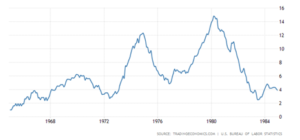Central banks’ monetary policies are the most perverse government intervention. Their consequences are dire, last for a very long time, and people don’t perceive them as problems or don’t comprehend the damage they are doing. Monetary policy (monetary expansion and artificially low interest rates) has five main consequences that harm overall living standards.Price InflationThis is the most obvious consequence, and yet, it is very misunderstood by voters. If the money that is effectively circulating in the economy (i.e., M1 and M2, or for a better perspective, the true money supply) increases, price inflation tends to increase. The expansion of the money supply destroys consumer purchasing power and makes people poorer over time.Bigger GovernmentGovernment spending
Read More »Articles by André Marques
Digital Currency: The Fed Moves toward Monetary Totalitarianism
December 9, 2022The Federal Reserve is sowing the seeds for its central bank digital currency (CBDC). It may seem that the purpose of a CBDC is to facilitate transactions and enhance economic activity, but CBDCs are mainly about more government control over individuals. If a CBDC were implemented, the central bank would have access to all transactions in addition to being capable of freezing accounts.
It may seem dystopian—something that only totalitarian governments would do—but there have been recent cases of asset freezing in Canada and Brazil. Moreover, a CBDC would give the government the power to determine how much a person can spend, establish expiration dates for deposits, and even penalize people who saved money.
The war on cash is also a reason why governments want to
Money Does Matter: The End of the Gold Standard Led to a Lower Standard of Living
August 27, 2022On August 15, 1971, Richard Nixon announced that the US dollar (USD) would no longer be redeemable in gold. This was supposed to be temporary. And yet, 51 years later, here we are. The gold standard was gradually destroyed in the twentieth century. Now people are experiencing the consequences: less purchasing power, more economic cycles, and a weaker economy.
In the chapter 4 of his book What Has Government Done to Our Money?, Murray Rothbard goes over the steps the government took to end the gold standard over the twentieth century, from the end of the classical gold standard to the closing of the gold window in 1971.
The Classical Gold Standard (1815–1914)
The classical gold standard tended to prevent the government from running budget deficits and going into


